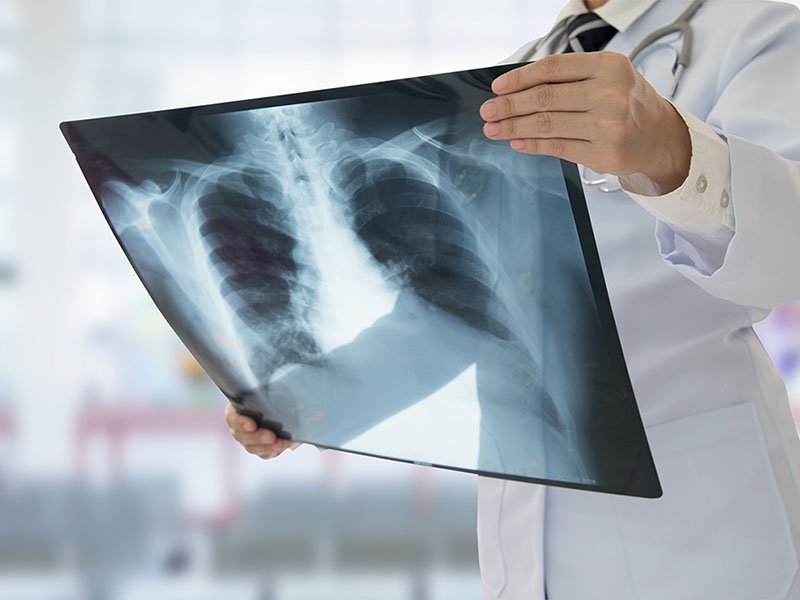Clinic Consultation in Brampton / ON, provides state-of-the-art X-ray exam services, catering to patients in need of diagnostic imaging for a variety of conditions. Our facility is equipped with the latest in X-ray technology, allowing for high-resolution images that aid in the accurate diagnosis of bone fractures, joint abnormalities, and certain diseases within the chest and abdomen. Our team of skilled radiologists and technicians are trained in utilizing advanced radiographic techniques to ensure patient comfort and safety throughout the imaging process. Clinic Consultation prioritizes swift and accurate diagnostic assessments, ensuring that each patient receives comprehensive care tailored to their specific needs. Following the exam, our radiologists provide detailed interpretations of the X-ray findings, collaborating with referring physicians to facilitate the best possible treatment plans. For those seeking reliable and professional X-ray services in Brampton / ON, Clinic Consultation stands as a premier choice, dedicated to excellence in diagnostic imaging and patient care.
X-ray in Brampton / ON

X-ray in Brampton / ON
An X-ray is a non-invasive imaging procedure that uses low-dose radiation to capture images of the inside of the body. X-rays are commonly used to diagnose and monitor a variety of conditions, such as bone fractures, lung infections, and dental issues. The images produced allow healthcare providers to assess the condition of bones, tissues, and organs in detail.
During an X-ray, the patient is positioned between the X-ray machine and a specialized film or digital detector. As the X-ray machine sends a small amount of radiation through the body, denser structures like bones absorb more radiation and appear white, while softer tissues appear darker on the image.
Types of X-rays
Chest X-ray
A Chest X-ray is one of the most common types of X-rays, primarily used to evaluate the lungs, heart, and chest wall. It is often requested when a patient experiences symptoms such as persistent cough, chest pain, or shortness of breath. Chest X-rays can help diagnose conditions such as pneumonia, tuberculosis, lung cancer, and heart problems.
During the procedure, the patient stands in front of the X-ray machine, and images are taken from both the front and side. The process is quick, usually taking just a few minutes, and the results are available shortly after. A chest X-ray is invaluable in detecting lung and heart conditions early, allowing for timely treatment.
Bone X-ray
A Bone X-ray is used to examine fractures, dislocations, and other bone-related issues. This type of X-ray provides a detailed view of the bone structure, helping to detect breaks, joint problems, and abnormalities such as arthritis or osteoporosis. Bone X-rays are commonly used after trauma, such as accidents or sports injuries, to assess the extent of damage.
The procedure is similar to a chest X-ray, with the patient positioned so that the area of concern (e.g., arm, leg, or spine) is between the X-ray machine and the detector. The process is quick, taking only a few minutes, and is often followed by immediate analysis by a healthcare provider to determine the necessary treatment plan.
Advantages of X-rays
X-rays offer several key advantages as a diagnostic tool:
- Quick and efficient: X-rays are fast, providing immediate results that allow for rapid diagnosis and treatment planning.
- Non-invasive: X-rays do not require surgery or complex procedures, making them a safe and convenient option for both diagnosis and monitoring.
- Versatile: X-rays can be used to diagnose a wide range of conditions, from broken bones to lung diseases, making them a fundamental tool in medical care.
The entire procedure typically takes only a few minutes, and patients can return to their normal activities immediately after the X-ray is completed.
Pre- and Post-X-ray Care
Pre-exam care: There is generally no special preparation needed for an X-ray. However, patients may be asked to remove any jewelry, eyeglasses, or metal objects that could interfere with the imaging. It is also important to inform the technician if you are pregnant or may be pregnant, as precautions may need to be taken.
Post-exam care: No recovery time is needed after an X-ray, and patients can resume normal activities right away. The healthcare provider will analyze the X-ray images and discuss the results with you during a follow-up appointment.
Frequently Asked Questions (FAQ)
1. Is it safe to have an X-ray?
Yes, X-rays use a very low dose of radiation, and the risk is minimal. The benefits of diagnosing a health condition far outweigh the small risk from exposure. However, pregnant women should always inform their healthcare provider before undergoing an X-ray.
2. How long does it take to get X-ray results?
X-ray results are often available within minutes, though the detailed analysis may take longer. Your doctor will discuss the findings with you during a follow-up appointment.
3. Do X-rays hurt?
No, X-rays are painless. The only discomfort may come from holding still in a specific position during the imaging, but this only lasts for a few moments.
X-ray Services at Clinic Consultation
At Clinic Consultation, we offer a full range of X-ray services to help diagnose and monitor various conditions quickly and accurately. Whether you need a chest X-ray, bone X-ray, or any other type of diagnostic imaging, our team is equipped to provide high-quality care in a comfortable and professional environment.
Book an appointment today to schedule your X-ray at Clinic Consultation.
Click the button below to schedule your appointment online.